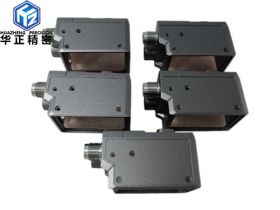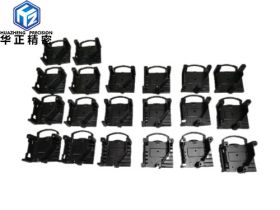Technology Center
Recommended Products
Contact Us
Contact Person: Cindy Zhu
TEL:+86 13418453374
Nine basic operating steps of CNC machine tools
Nine basic operating steps of CNC machine tools
1. Editing and input of workpiece program: Before processing, you should first analyze and compile the processing technology and processing program of the workpiece. If the processing program of the workpiece is long or complicated, do not program on the CNC machine tool, but use the programming machine or computer programming. , And then back up to the numerical control system of the numerical control machine tool through a floppy disk or communication interface. This can avoid occupying the machine and increase the auxiliary time for processing.
2. Startup: Generally, the main power is turned on first, so that the CNC machine tool has the power-on conditions. A key button CNC system and the machine tool are both powered on at the same time. Information is displayed on the CRT of the CNC machine tool system and the hydraulic pressure of the machine tool is checked at the same time. Pneumatics, the link status of each feed axis and other auxiliary equipment.
3. Fixed test point: Establish the movement datum of each coordinate of the machine tool before machining the machine tool. This step should be performed first for the machine tool of the augmentation control system.
4. Input and call of processing program: According to the program medium (tape, disk), you can use tape drive, programming machine or serial communication to input rocking segment processing. Before processing, you must also input the original point of the part in the adding program, the tool parameters, the set amount, and various compensation values.
5. Editing of the program: If the program under the jurisdiction needs to be blamed, the working mode selection switch should be placed in the editing position. Use the edit key to add, delete, and change.
6. Check and debug the program: first lock the machine tool and only run the system. This step is to check the program, if there is an error, edit it again.
7. Installation and alignment of the workpiece: install and align the lower part to be processed to establish a benchmark. The method adopts manual incremental movement, continuous movement or hand wheel to move the machine tool. Move the starting point to the beginning of the program, and set the tool benchmark.
8. Start the coordinate axis for continuous processing: continuous processing generally uses the program in the memory to add dices. The feed speed in CNC machine tool processing can be adjusted by the feedrate override switch. During processing, you can press the feed hold button to pause the feed movement to observe the processing conditions or perform manual measurement. Press the cycle start button again to resume processing, to ensure that the program is correct, and you should review it again before adding dicing. During milling, for flat curved parts, a pencil can be used instead of a tool to draw the contour of the workpiece on paper. This is more intuitive. If the system has a tool path, the simulation function can be used to check the correctness of the program.
9. Shutdown: After adding and before turning off the power, pay attention to check the status of the CNC machine tool and the position of each part of the machine tool. Turn off the power of the machine tool first, then turn off the power of the system, and finally turn off the main power.
The above is the basic operation steps of Shenzhen Huazheng Precision Technology Co., Ltd. when using CNC CNC machine tools to process aluminum alloy parts. Hope it will be useful to you!
Prev: Deburring process in machining
Next: What are the techniques to avoid deformation in hardware processing?
Back















